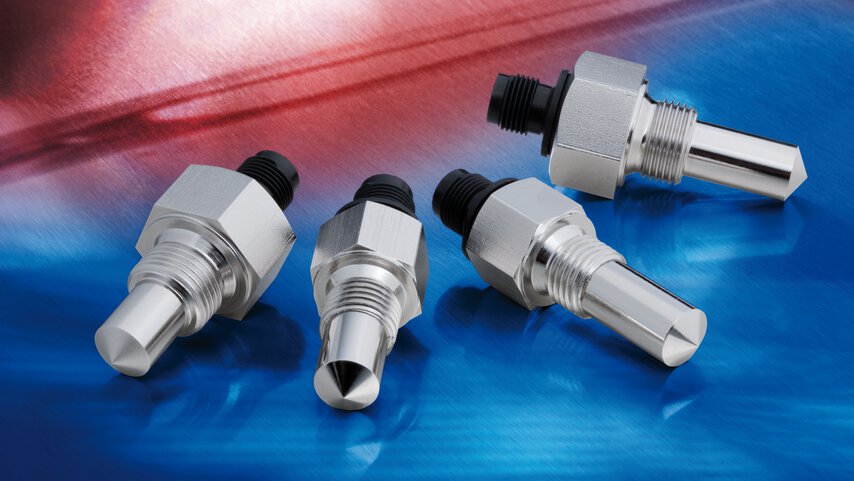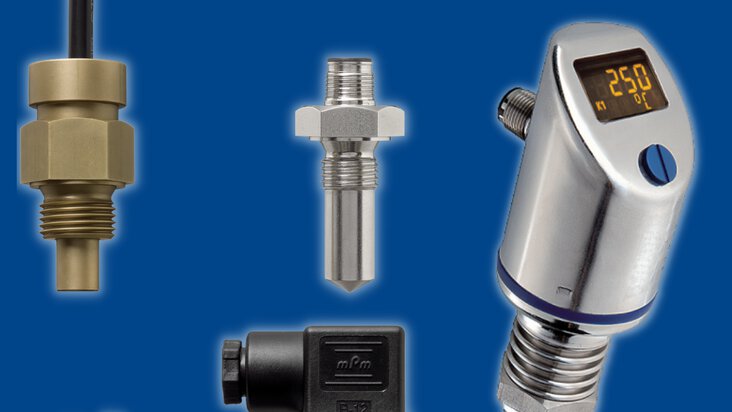

Temperature switch sensor – construction, operation, types
A temperature switch, also referred to as a thermal fuse, thermal switch or simply temperature switch, among others, is a device widely used in industry for safety purposes. What is it, how does it work and how do you choose the right one for your application? We answer these questions in the following post. Read on!
What is a temperature switch?
A temperature switch is a device that monitors the temperature and opens or closes the corresponding switching contact when a predefined switching temperature is reached. To protect the machine from overheating, the temperature switch shuts down the machine or starts the cooling fan.
How does the temperature switch work?
The temperature switch works like a typical electrical switch in 'on-off' applications. This device can be set to respond to a specific temperature. When the switch's measuring probe detects an increase in temperature, it opens or closes the electrical contacts. When the temperature decreases, the electrical contacts close or open.
Temperature switch – types
There are several ways of classifying temperature switches. Considering the state before actuation, we distinguish between normally open (NO) and normally closed (NC) switches. We also speak of switches with automatic and manual reset. With regard to the type, we distinguish between:
Bimetal thermal switches
Temperature measurement in these switches takes place via bimetal disc. They close when the nominal switching temperature is reached.
Advantages of bimetallic temperature switches
-
universally applicable
-
high stability even with vibration - can be used in compressors or motors
-
small dimensions
-
reasonable price
-
no additional contactor required for switching voltages up to 25 V
Bimetal thermal contacts – disadvantages
-
less accuracy
-
do not allow further signal processing
-
temperature range limited to 200° - the connector of the bimetal switch is located close to the hot area

Bimetallic switches and limiters
Electronic switches
Advantages of electronic switches
-
high accuracy
-
independent switching of limit values
-
several switching points can be set
-
thanks to additional analogue outputs, can also be used for other applications, e.g. continuous temperature monitoring
-
can be equipped with IO-Link function
-
direct access to measurement results via LED display
Disadvantages of electronic switches
-
price
-
temperature limitation to 150°C
-
need for a contactor in addition to the power supply

Electronic temperature switch and temperature sensor JUMO DELOS T
Disc thermometers with changeover contacts
Advantages of disc thermometers with changeover contacts
-
wide temperature range up to 350°C
-
two switching settings possible
-
allows switching of low voltages (250 VAC)
-
no additional power supply required
-
no additional contactor required
Disadvantages of dial thermometers with switching contacts
-
no further signal processing possible
Is the thermostat a temperature switch?
The thermostat can have a temperature switch function for protection against overheating or overcooling.

JUMO ATH Safety Thermostats
What is the difference between NO and NC temperature switches?
Temperature switches come in two design varieties. A NO (normally open) switch means that when it is actuated, the contacts are normally open. A NC (normally closed) temperature switch means that the contacts are normally closed.
NO closes the machine circuit when the switching temperature is reached so that, for example, a fan or a warning light can be switched on. The NC switch opens and closes the machine circuit. In both cases, when the temperature falls below the reset set point, the contacts return to their normal state so that the monitored equipment can start working again.
Temperature sensor switch – applications
Temperature switches are used in numerous industrial and manufacturing processes. They are particularly used in:
-
food and beverage industry
-
pharmaceutical industry
-
automotive industry
Typically, temperature switches are found in heating systems, air heaters, water boilers and circulation pumps
- ${title}${badge}

